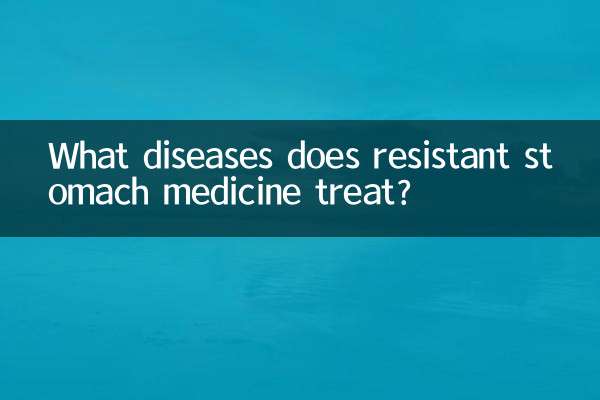What medicine is good for absence seizures?
Absence seizures are a form of epilepsy that are more common in children and adolescents. Patients will suddenly experience a brief loss of consciousness, manifested by dull eyes and cessation of movements, usually lasting from a few seconds to tens of seconds. For the treatment of absence seizures, drugs are the main intervention method. This article will combine the hot topics and hot content on the Internet in the past 10 days to give you a detailed introduction to the drug treatment plan for absence seizures.
1. Commonly used drugs for absence seizures

The following are commonly used drugs for the treatment of absence seizures and their characteristics:
| Drug name | Mechanism of action | Applicable people | Common side effects |
|---|---|---|---|
| ethosuximide | Inhibit abnormal discharge of thalamic neurons | children and teenagers | Gastrointestinal discomfort, drowsiness |
| sodium valproate | Enhance GABAergic neurotransmission | all ages | Weight gain, abnormal liver function |
| lamotrigine | Inhibit glutamate release | adults and children | rash, headache |
| Levetiracetam | Regulates synaptic vesicle proteins | all ages | Mood changes, fatigue |
2. Precautions for drug selection
1.age factor: Ethosuximide is preferred for pediatric patients because of its smaller side effects; sodium valproate or lamotrigine may be considered for adult patients.
2.Comorbidities: If the patient also has other types of seizures, sodium valproate may be a better choice.
3.drug interactions: Certain anti-epileptic drugs may affect the effectiveness of birth control pills, so women of childbearing age need to pay special attention.
4.Monitoring requirements: Liver function needs to be checked regularly when taking sodium valproate, and you need to be alert to the risk of severe rash when taking lamotrigine.
3. Recent research hotspots
According to recent hot topics discussed in the medical community, there are the following new developments in the drug treatment of absence seizures:
| Research areas | Latest findings | clinical significance |
|---|---|---|
| pharmacogenomics | Specific genotypes found to influence drug response | Precision medication may be possible in the future |
| New drug research and development | Cenobamate shows potential efficacy | May offer new treatment options |
| Digital therapy assistance | APP is effective in monitoring seizure frequency | Improve medication compliance and efficacy assessment |
4. Life conditioning suggestions
In addition to medication, patients should also pay attention to:
1.Regular schedule: Ensure adequate sleep and avoid staying up late.
2.Diet management: Avoid excessive intake of caffeine and alcohol.
3.pressure regulation:Learn stress management techniques and reduce triggers.
4.Security protection: Avoid dangerous activities such as swimming alone and working at heights.
5. Medical guidance
If symptoms of an absence seizure occur, it is recommended to:
1.Seek medical attention promptly: Go to a neurology specialist to complete EEG and other examinations.
2.Detailed records: Record attack frequency, duration and other information for doctors’ reference.
3.Standardized medication: Take medicine on time as directed by the doctor and do not increase or decrease the dose without authorization.
4.Regular review:Regular follow-up visits to evaluate the efficacy according to the doctor’s recommendations.
In short, drug treatment of absence seizures requires individualized plans, and patients should use drugs rationally under the guidance of professional doctors. As medicine advances, more safe and effective treatment options are emerging.

check the details

check the details